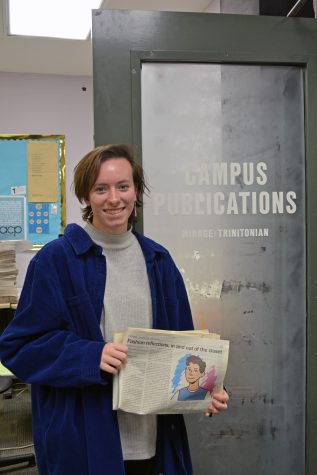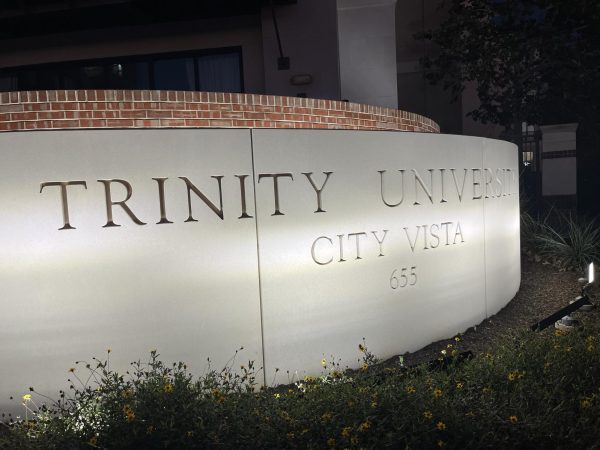University offered faculty, staff monetary stimulus to alleviate budget problems
Fifteen faculty members and 41 staff took advantage of the Voluntary Separation Incentive Plan
A wave of faculty and staff left Trinity this spring following university efforts to cut pandemic-induced costs.
In the past year and a half, Trinity University’s budget has taken a hit due to the COVID-19 pandemic. To make up for lost money, the university created a budget task force to solve monetary problems. Efforts included the introduction in spring 2021 of the Voluntary Separation Incentive Plan, or VSIP. This program allowed faculty and staff to leave the university with a monetary stimulus.
Because of losses associated with the pandemic, Danny Anderson, university president, created an operating budget task force, composed of trustees, faculty and staff and the finance team. There were 23 members on this task force.
Gary Logan, vice president for Finance and Administration, reflected on the thought process behind this task force.
“The president charged us with approaching this in two phases: Phase one was ways to identify temporary expenditure reductions, ways we could balance things as best we could for the last fiscal year, the year that ended May 31 of ‘21,” Logan said. “And then, phase two was if we still had a structural budget deficit that was longer term, what would we do for permanent extension reductions?”
To best deal with these problems, the executive leadership team provided the task force with a list of their guiding principles — the things they needed to protect in budget cuts. Additionally, they created a decision-making rubric which served as a filter to look at recommendations and decisions through. The top priority for the task force was to protect the university’s constituents.
“They were also thinking in terms of another important process here: human assets of the university, the staff and the faculty and the students,” Logan said. “It really is the human capital of the university that we wanted to protect as much as possible.”
Though Trinity had many ways of cutting the budget, such as dipping into the rainy day reserve or cutting back some academic departments’ budgets, one of the biggest solutions was to allow faculty and staff voluntary separation from the university.
“Most expenses were related to salary and benefits, about 60% of all our expenses,” Logan said. “We anticipated early on that we would have to reduce the compensation budget in one way or another. One of the guiding principles that this group developed was that, to the greatest extent possible, we wanted to have voluntary, rather than involuntary, reductions of staff or faculty.”
The Voluntary Separation Incentive Plan was open to any employee regardless of age. The only requirement for staff or faculty to sign up for the plan was for them to be full-time employees with 10 or more years of consecutive service. David Ribble, associate vice president for Budget & Research, notes that the only other barrier to potentially qualify for the program was a staff member’s role within the university.
“We felt like [if] that person that was in a leadership role left, that would cripple us,” Ribble said. “So even before people started applying for it, we made some decisions about critical positions. It had nothing to do with the person; it was just the nature of their job.”
Staff were let go with 12 months’ pay, while faculty got 18 months because of tenure. Additionally, both staff and faculty got a 5% retirement contribution.
Fifteen faculty members took advantage of this program, 12 of whom are going to be replaced in the future. Forty-one staff members participated, and the university will replace 23 of these positions.
“We were holding those positions and looking at them and determining on a case by case basis if we could solve the work and program support issues around a position,” Logan said. “If we decided we could not, then we will eliminate the position.”
Of course, there are natural consequences to letting go of staff and faculty.
“We’ve tried to encourage people to think about, if you reduce your staff, you can’t continue to do all the things you did when you had more staff,” Ribble said. “For example, the people on Facilities took advantage of VSIP, so we don’t have as many people to keep the lawn trimmed and tight as Trinity is accustomed to. People might have to do more of emptying their own trash cans. That’s a sacrifice we have to make.”
Beginning in fiscal year 2022, VSIP provided $2.5 million in expense reductions. Overall, Trinity reduced FY 2022’s expense budget with permanent reductions of about $10.5 million dollars. The people on the task force were pleased with the cuts made and how student and employee success were placed at the forefront of their decision-making process.
“We want to be good stewards of the resources entrusted to us by the donors and students and their families and we think that these are appropriate and wise reductions that help us become more efficient,” Logan said.

My name is Emma and I am a sophomore from Lockhart, Texas. I have worked at the Trinitonian since Spring 2021. I am an English major and hope to become...











